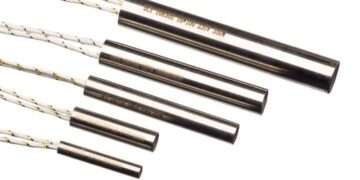Manual adjustments and hands-on chiropractic treatment rule the day within the chiropractic training and education sector. The primary areas of advanced technology transforming chiropractic education include simulation equipment, ultrasound, nerve system diagnostics, and ultrasound. Below is a list of ways in which emerging technologies support chiropractic education.
Diagnostic Technologies
The diagnostics process assists doctors in addressing the cause or nature of the problem. Chiropractors have been using X-rays for years to enable them to have an inside look at spine misalignment locations. Emerging technologies in chiropractic care, such as surface electromyography (EMG), help in assessing the electrical activity present within skeleton muscles. An electromyograph creates an electromyogram, a readout depicting the abnormalities’ location. Dr. Brad Kern employs EMG to perform nerve conduction testing within the muscles to identify the limb where the pain is originating from, as well as identify weaknesses associated with spinal nerve compression.
Simulation Labs
Chiropractic simulation labs prepare students to learn the science and art of chiropractic medicine. Teaching facilities employ a Cox 8 force-sensing table, Force Sensing Table Technology (FSTT), and multiple training aids to help students learn motor skill training with ease. Students who work with the FSTT improve their skill sets and abilities by fine-tuning the pressure applied to anatomical features, including the spinal columns. In addition, simulation labs provide immediate objective feedback, which takes away the guesswork during chiropractic adjustments.
Traction
Traction has been used in the past to assist patients with degenerative conditions such as arthritis. The process functions by eliminating the tension from joints or spinal discs and stretching the patient’s spine. Traction helps release the pressure that’s present in discs and compressed nerves, which causes tingling, numbness, and weakness. Traction is paired with manual manipulations to space out patients’ spines through alignment.
Cold Lasers
Lasers are some of the latest technologies in chiropractic treatment. Cold lasers employ distinct light wavelengths, which help induce healing. Chiropractors usually focus a flashlight-sized laser on the injured region to allow the light to penetrate the soft tissue layers. The outcome is pain relief and minimal inflammation, which leads to healing in the long run.
Electric Muscle Stimulation
In this treatment, chiropractors place electrodes on the skin to activate electric muscle stimulation. Electric muscle stimulation transmits electric current to the injured area to promote healing and reduce pain. The current wears and exercises muscles at higher frequencies to prevent muscle spasms.
Ultrasound
Ultrasound has been used to assess the development of a fetus inside the mother’s womb. Chiropractors employ short waves of ultrasound to conduct the heat to soft tissues. Then, a small device is positioned on the affected area to allow the ultrasound’s heat to alleviate stiffness, bolster circulation, and foster healing.
Intersegmental Traction Table
The intersegmental traction table functions as a massage table, but it’s way better in terms of functionality. The table helps move the spine, and patients recline on the traction table with a rollover that moves up and down. The up-and-down movement generates motion between the vertebrae, which loosens them aside from relaxing muscles feeding the joints with synovial fluid. The outcome of this chiropractic adjustment is greater movement with minimal pain.
Advanced technologies have continually changed the chiropractic curriculum in colleges and training facilities. Technological tools for chiropractic adjustments are non-invasive and hold a supportive role in the treatment process.
Also, Read: Examining the Essential Role of Nursing Educator

















